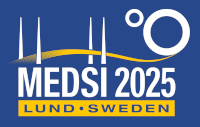Speaker
Jie Chen
(National Synchrotron Radiation Laboratory, University of Science and Technology of China)
Description
Eutectic indium–gallium alloys exhibit superior properties for cooling high-precision high heat load beamline optics, including high thermal contact conductance, extremely low vapor pressure, and excellent vibration decoupling. These remarkable properties make them central to current cooling solutions, which primarily involve In–Ga bath and gap cooling schemes. However, challenges such as thermal stability and bubbles accumulation remain. To address these, we built an in-situ system for simultaneous measurement of thermal contact conductance and bubble behavior, offering key guidance for enhancing cooling reliability.
Author
Jie Chen
(National Synchrotron Radiation Laboratory, University of Science and Technology of China)
Co-authors
Dezhi Diao
(Zhejiang Institute of Photoelectronics & Zhejiang Institute for Advanced Light Source)
Qi Zhou
(National Synchrotron Radiation Laboratory, University of Science and Technology of China)
Shen Wei
(National Synchrotron Radiation Laboratory, University of Science and Technology of China)
Shuaikang Jiang
(University of Science and Technology of China, National Synchrotron Radiation Laboratory)
Xuewei Du
(National Synchrotron Radiation Laboratory, University of Science and Technology of China)

